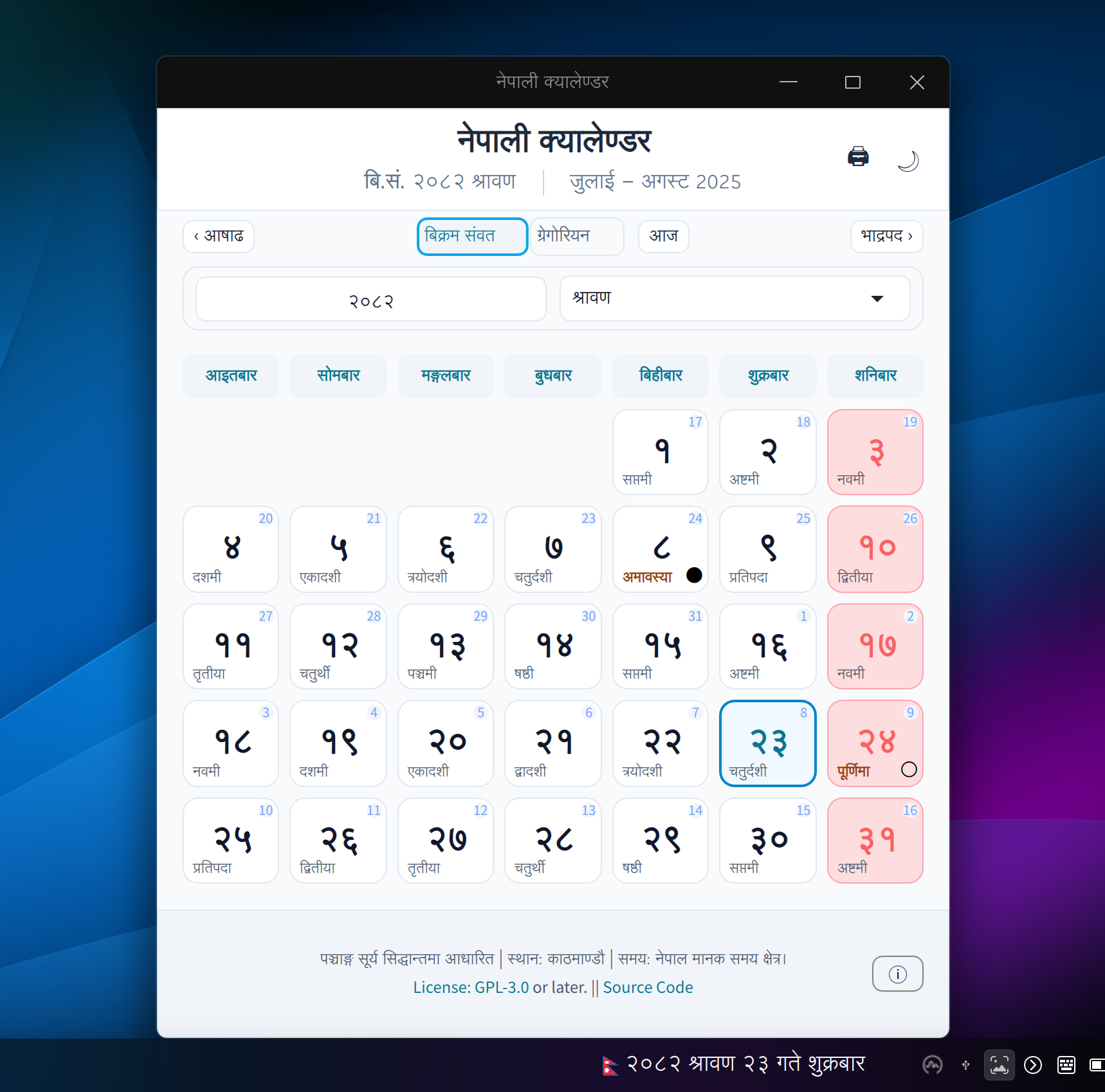Introducing the All-New Bikram Calendar, Reimagined with Qt 6 and Detailed Panchanga!
Hello everyone,
Many of you might remember the C++ Bikram Calendar application I released last year. It was a project born out of a desire for a simple, native desktop calendar for Bikram Sambat. I was thrilled by the response and feedback from some of my friends and users. That support inspired me to take it to the next level.
Today, I’m incredibly excited to announce a complete overhaul of the project. This isn’t just an update; it’s a brand-new application, rebuilt from the ground up with the modern Qt 6 and QML framework. Welcome to the new Bikram Calendar!
What’s New? A Modern Leap Forward
This new version is all about providing a richer, more flexible, and more detailed experience. I’ve focused on three key areas: modern technology, deeper cultural information, and user customization.
1. A Modern Makeover with Qt 6 & QML
The biggest change is the move to Qt 6. By leveraging QML, the application now boasts a more fluid, responsive, and visually appealing user interface. The backend remains powerful and efficient, with native C++ handling system tasks and Javascript for calculation logic, giving you the best of both worlds. It’s faster, sleeker, and ready for modern desktops.
2. Deeper into the Panchanga (पञ्चाङ्ग)
One of the most requested features was more detailed astrological and traditional information. I’m happy to say, it’s here! The calendar now provides comprehensive Panchanga details.
- The main calendar view shows the daily Tithi (तिथि) at a glance.
- Clicking on any day reveals a detailed panel with the Tithi, Nakshatra (नक्षत्र), Yoga (योग), and Karana (करण).
This has been a significant effort, using a hybrid calculation system for accuracy. For dates between 2000 BS to 2089 BS, the app uses pre-computed data to ensure precision. For dates outside this range, it dynamically calculates them based on the traditional Surya Siddanta (सूर्य सिद्धान्त) logic.
Note on Accuracy: The Surya Siddanta is an observational system, so calculated times can vary slightly from other sources. For official ceremonies, please always cross-reference with a calendar approved by the Nepal Panchanga Nirnayak Samiti (नेपाल पञ्चाङ्ग निर्णायक समिति).
3. Enhanced Customization and User Experience
A good desktop app should feel like it’s yours. The new Bikram Calendar now includes:
- Light & Dark Themes: Easily switch between themes with a single click. The app remembers your choice.
- Font Customization: Right-click the desktop widget to adjust font sizes and colors to your liking.
- State Persistence: The app conveniently remembers the position and size of its windows, so you can set it up just the way you like it.
A Glimpse of the New Bikram Calendar in Action
Here’s a look at the new interface, showcasing its clean design and the detailed Panchanga information panel.

For the Tech Enthusiasts: Build It Yourself!
As an open-source project, you have full freedom to build it from the source. The repository contains detailed instructions for Debian/Ubuntu and Arch Linux. You can use Qt Creator, qmake, or CMake for compilation.
I’ve also taken care to document support for the Wayland display server. Due to its security protocols, there are a couple of minor differences in behavior (like opening the calendar via the right-click menu), which are fully explained in the README file.
Get Involved!
This project is for the community, and contributions are always welcome. Whether you find a bug, have a feature suggestion, or want to contribute code, I encourage you to get involved.
- Check out the project on GitHub: GitHub Repository
- Fork the repository and create a new branch for your feature.
- Submit a Pull Request with your changes.
The project is licensed under the GNU General Public License v3.0, ensuring it will always remain free and open.
Thank you once again for your support. I hope this new and improved Bikram Calendar finds a useful place on your desktop.
Happy computing!